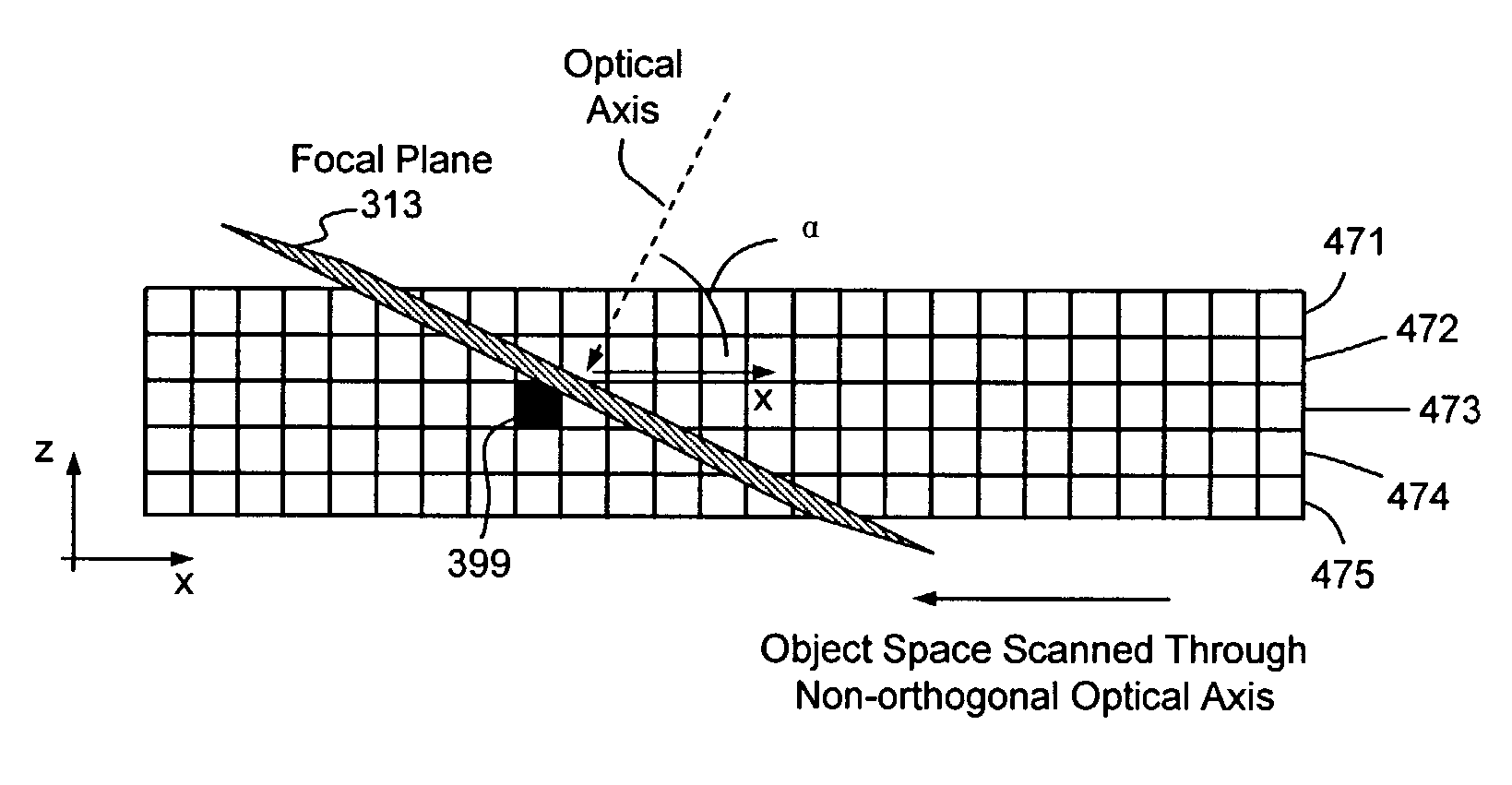Dual-axis scanning system and method
a scanning system and dual-axis technology, applied in the field of image acquisition systems and image processing techniques, can solve the problems of inefficient system design and operation, high cost and general difficulty in implementation, and inconvenient design and operation of systems, etc., to achieve rapid determination of object locations, without excessive cost
- Summary
- Abstract
- Description
- Claims
- Application Information
AI Technical Summary
Benefits of technology
Problems solved by technology
Method used
Image
Examples
Embodiment Construction
[0027]As set forth above, FIG. 1A is a simplified functional block diagram illustrating one embodiment of a conventional image acquisition system, and FIG. 1B is a simplified block diagram illustrating an image captured by the system of FIG. 1A. The goal of such systems is to generate stacks of images; each stack is composed of a series of images acquired at successive z locations in the object space. In that regard, FIGS. 2A and 2B are simplified block diagrams illustrating image stacks acquired by conventional imaging systems.
[0028]To acquire the data illustrated in FIG. 2B, a conventional system must collect twenty discrete images (ie., five images 171-175 for each of four stacks 201-204). Assuming video rate acquisition performance and similar component movement rates and settling time, then the time required to acquire these images may be estimated by the following equation:
Time=(Total Frames)×(Exposure+Movement+Settling)
[0029]For twenty frames, this equation yields a time of a...
PUM
 Login to View More
Login to View More Abstract
Description
Claims
Application Information
 Login to View More
Login to View More - R&D
- Intellectual Property
- Life Sciences
- Materials
- Tech Scout
- Unparalleled Data Quality
- Higher Quality Content
- 60% Fewer Hallucinations
Browse by: Latest US Patents, China's latest patents, Technical Efficacy Thesaurus, Application Domain, Technology Topic, Popular Technical Reports.
© 2025 PatSnap. All rights reserved.Legal|Privacy policy|Modern Slavery Act Transparency Statement|Sitemap|About US| Contact US: help@patsnap.com



